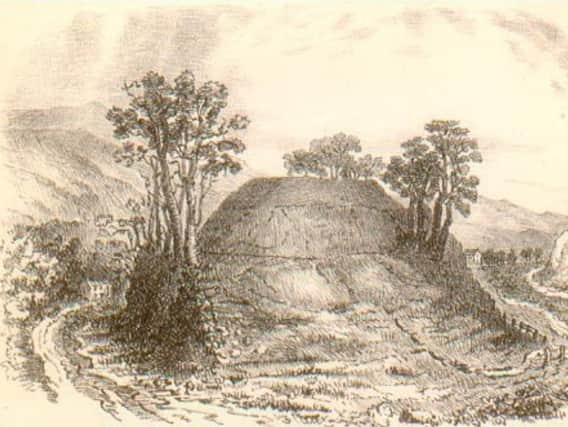Scotland's "first female archaeologist" who dug in against sexism and broke new ground in the field


Christian Maclagan was little honoured in her lifetime but whose fight against sexism and her contribution to archaeology is today gaining wider recognition.
Maclagan, who was born near Denny, Falkirk, in 1809, was recently honoured with a blue plaque with a wooden sculpture of a Pictish cross and archaeologist's tools also standing in Stirling Old Town.
Advertisement
Hide AdAdvertisement
Hide AdNearby, the Stirling Smith Art Gallery and Museum holds a permanent exhibition about the woman often described as "Scotland's first female archaeologist".
A short account of the challenges she faced was printed in the Falkirk Herald in October 1895.
Here, she was described as an "old Scotch lady, who is happily still alive, though she has never had the recognition that she deserves for the benefits she has conferred on the students of archaeology.
The report added: "Miss Christian Maclagan has spent a long life travelling up and down her own country, studying the records of past ages left on sculptured stones, not only the later carvings of pre-Reformation days but those of Christian and pre-Christian eras.
"The lady invented a mode of taking rubbings which is her own little secret but the value of her work is to be seen in 297 examples presented by her to the British Museum.
"The narrowness of Scotch appreciation of such work will, it is soon to be hoped, become past history.
"In the present, it means that the Society of Antiquaries of Scotland offered Ms Maclagan an associate-ship, but stood rigidly by an old rule that denied women membership.
"Very properly, this great scholar took herself and her name away from the society."
Advertisement
Hide AdAdvertisement
Hide AdMs Maclagan was born into a relatively rich family with her father a distiller and chemist. Her independent wealth meant she could pursue her interest in pre-history while also supporting the poorest of the city she called home.
According to Trowelblazers, a resource which illuminates the achievements of female archaeologists, her research into prehistoric Scotland remains important to this day.
She was amongst the first archaeologists to consider archaeological stratigraphy - or the sequence of events that can be built up around a particular site by examining the layers of ground.
Her section drawings of Coldoch Broch in Stirlingshire were published five years before English archaeologist Pitt Rivers, who is generally credited with the introduction of this field method to British archaeology, began his excavations at Cranborne Chase, according to the Trowelblazers website.
Maclagan's work at Coldoch Broch appears to have been disregarded on the grounds of her sex.
“He is chronicled by the Society as the discoverer, while the writer of these notes was completely ignored,” Maclagan wrote in 1884.
At the age of 80, Maclagan was still on tour sharing her findings. Around that time, she also built herself a large oak case, designed by herself, to store her collection of rubbings.
In 2016, the site of Livilands Broch in Stirling that was identified by Maclagan was excavated for the first time.
